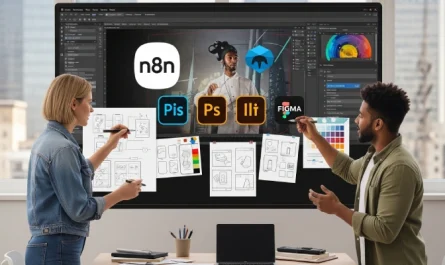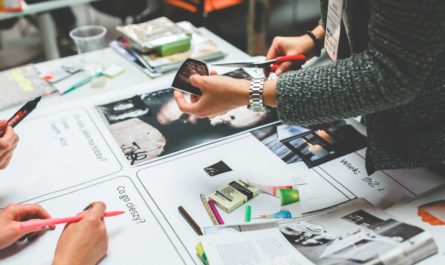Introduction
Ever noticed how fast food logos often feature red and yellow? Or why luxury brands stick to black and gold? That’s no accident. Colors speak a silent language that influences our emotions, triggers actions, and shapes our buying behavior. This phenomenon is called Color Psychology in Branding—a subtle yet powerful tool brands use to connect with consumers and boost conversion.
Why is this blog important?
In a world where consumer attention spans are shrinking, first impressions matter more than ever. Studies show that people form an opinion about a product within 90 seconds of interaction—and 62–90% of that judgment is based on color alone (source). Brands that understand the psychology of color can create emotional connections, influence perception, and ultimately drive purchasing decisions. That’s where a skilled integrated marketing agency or creative agency in India comes into play.
The Psychology Behind Common Brand Colors
1. Red – Action, Urgency, Appetite
Red is a stimulating color. It evokes excitement, urgency, and passion. It’s often used in clearance sales or fast-food branding to grab attention and stir appetite.
Brands that use Red: Coca-Cola, Netflix, McDonald’s
2. Blue – Trust, Stability, Security
Blue builds a sense of trust and dependability. It’s common among finance, tech, and healthcare brands to project professionalism and calm.
Brands that use Blue: Facebook, PayPal, IBM
3. Yellow – Optimism, Youthfulness, Energy
Yellow exudes cheerfulness and warmth. Brands use it to trigger happiness and promote affordability.
Brands that use Yellow: Snapchat, IKEA, McDonald’s
4. Green – Growth, Nature, Health
Green is calming and associated with health, sustainability, and tranquility. Eco-conscious and health brands love this palette.
Brands that use Green: Starbucks, Whole Foods, Spotify
5. Black – Luxury, Sophistication, Elegance
Black is sleek, authoritative, and classy. Luxury brands often rely on black to signal exclusivity and prestige.
Brands that use Black: Chanel, Apple, Nike
Color & Conversion: The Data Speaks
- 92.6% of people say visual dimension is the #1 influencing factor affecting their purchase decision (source).
- 80% increase in brand recognition is linked to color usage (source).
These stats prove that Color Psychology in Branding is not just a visual strategy—it’s a conversion strategy.
Cultural Nuances Matter
Colors can have different meanings across cultures. For example:
- Red is lucky in China but can mean danger in Western cultures.
- White symbolizes purity in the West but mourning in some Asian countries.
An experienced marketing agency takes into account cultural insights when crafting brand colors for global reach.
Color Consistency Builds Brand Recall
Color consistency across platforms improves brand recall by up to 80% (source). A skilled creative agency in India ensures that your brand colors remain consistent across packaging, digital assets, advertising, and merchandise.
Why Work with an Integrated Marketing Agency?
An expert integrated marketing agency doesn’t just pick colors based on trends—they align them with brand values, psychology, audience preferences, and even seasonal behavior. They use A/B testing, consumer behavior analytics, and design thinking to create emotional color palettes that convert.
Whether you’re launching a new brand or refreshing an existing one, the right color palette can define your identity and elevate your sales.
Conclusion
Color is more than aesthetics—it’s a psychological trigger that directly influences consumer behavior. Businesses that understand and strategically use Color Psychology in Branding can dramatically improve engagement and ROI.
So, the next time you see a logo or product packaging that “feels right,” know that it was probably crafted with deep color psychology in mind.
Does this interest you? Connect with us to see how we can help you! 😊
10 Trending FAQs on Color Psychology in Branding
1. What is color psychology in branding?
It’s the study of how color affects consumer behavior and perception of a brand.
2. Why is red used in fast food logos?
Red triggers appetite and urgency, making it ideal for food brands.
3. What color is best for trust and security?
Blue is considered the most trustworthy and calming color.
4. How does color affect purchase decisions?
Up to 90% of product assessments are based on color alone.
5. Can color influence brand loyalty?
Yes. Consistent use of brand colors builds recognition and trust.
6. Is there a best color for conversions?
It depends on the industry, but colors like red and green are commonly used for CTAs.
7. Do colors have different meanings in different cultures?
Absolutely. Cultural context is critical when choosing brand colors globally.
8. What role does a creative agency play in color branding?
They align color choices with brand identity, audience psychology, and campaign goals.
9. How can I choose the right color for my brand?
Work with a branding expert or an integrated marketing agency for data-driven decisions.
10. What tools help in choosing brand colors?
Tools like Adobe Color, Coolors, and Canva can help—but strategy matters more than tools.
Some of the services that Clevertize provides are:
Creative Services, Performance & Digital Media Marketing, Visual Identity & Branding, Campaign Management & Analysis, UI/UX & Website design, Video creation, Media planning & buying, Chatbot & more.
If Return on Investment is critical for you, talk to Clevertize!
Reach out to us at saumya@clevertize.com!





